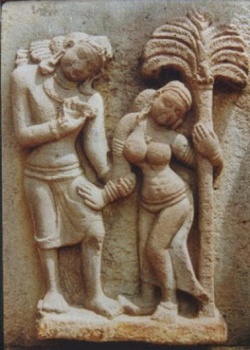Treatise on the Middle Way
Treatise on the Middle Way, The
中論 (Skt Madhyamika-shastra; Chin Chung-lun; Jpn Chu-ron )
One of Nagarjuna's (c. 150-250) principal works, translated into Chinese by Kumarajiva in 409. This Chinese translation consists of verses by Nagarjuna and prose commentary on these verses by Pingala, (who lived from the late third through the early fourth century). The Sanskrit text of Nagarjuna's verses, which is no longer extant, was titled the Madhyamaka-karika, or Verses on the Middle Way, and consisted of some 450 verses in 27 sections. It was regarded as the primary text of the Madhyamika (Middle Way) school, one of the two main traditions of Mahayana Buddhism in India, the other being the Vijnanavada (Consciousness-Only) school.
The Treatise on the Middle Way criticizes the assertion of the Sarvastivada school that the dharmas, or elements of existence, are real; based on the Wisdom sutras, it expounds the concept of nonsubstantiality and the practice of the Middle Way. It opens with the eight negations: neither birth nor extinction, neither cessation nor permanence, neither uniformity nor diversity, neither coming nor going. Through the process of negating established ideas of extremes, it leads one to the idea of emptiness, or nonsubstantiality, which is the core of Buddhist philosophy. The Treatise on the Middle Way explains that phenomena have no self-nature and are empty, or without substance, because they arise and disappear only by virtue of their relationship with other phenomena (dependent origination). This nonsubstantiality, definable neither as existence nor nonexistence, is termed the Middle Way.
Nagarjuna's conception of nonsubstantiality formed the theoretical basis of Mahayana Buddhism and exerted an inestimable influence on its later development. In China and Japan, The Treatise on the Middle Way became one of the three principal texts of the Three Treatises (Chin Sanlun; Jpn Sanron) school, the other two being The One-Hundred-Verse Treatise also by Nagarjuna and The Treatise on the Twelve Gates by his disciple Aryadeva.
